New Delhi, India —(Map)
Every year in the late fall, the air in Delhi, India becomes almost impossible to breathe. This year is the worst in three years and has caused the government to call a health emergency.
How bad is the air? The US Air Quality Index (AQI) is one way to measure air pollution. It goes from 0 to 500. Zero is “Good”, 150 is “Unhealthy”, and from 300 to 500 is “Hazardous” (dangerous). On Sunday, the air in New Delhi measured over 900.
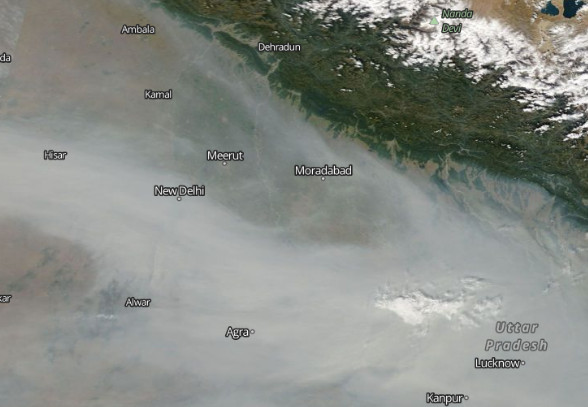
(Source: NASA Worldview.)
The air pollution, or “smog”, holds dangerous chemicals as well as billions of tiny “particles” – tiny bits of dust and pollution. The particles can be smaller than 1/30 of the width of a human hair. They go deep into the lungs and can cause many different sicknesses, such as coughs, headaches, sore throats, asthma, lung problems, and even cancer.
A recent study from the University of Chicago reports that in areas of India like Delhi, air pollution can shorten people’s lives by as much as seven years.
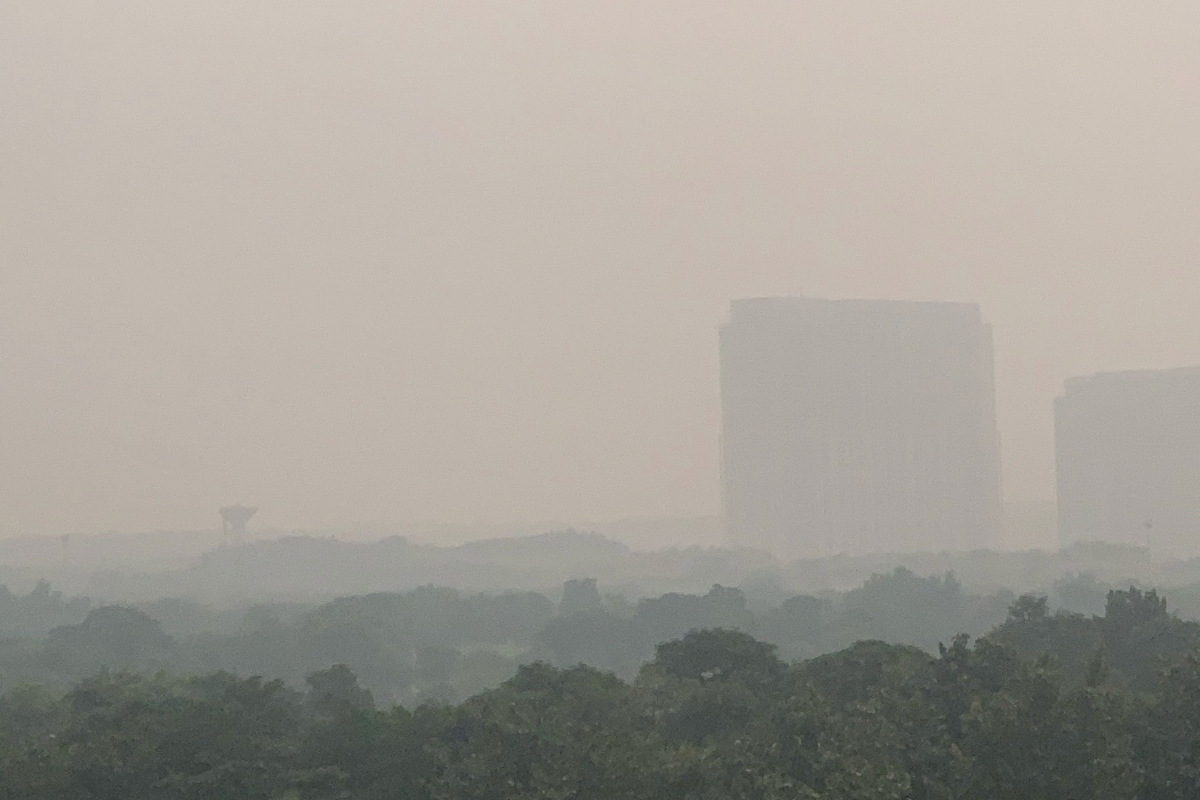
(Source: Globe.gov, via NASA.)
The pollution is always worse in winter, when the winds slow down and the colder air sinks closer to the ground, bringing the smog down with it.
This year, the problems got worse, as they usually do, with fireworks for the celebration of Diwali, the festival of lights. Though the government has talked about limiting the use of fireworks, not much seems to have changed. The smoke from the fireworks this year led to an AQI of nearly 500.
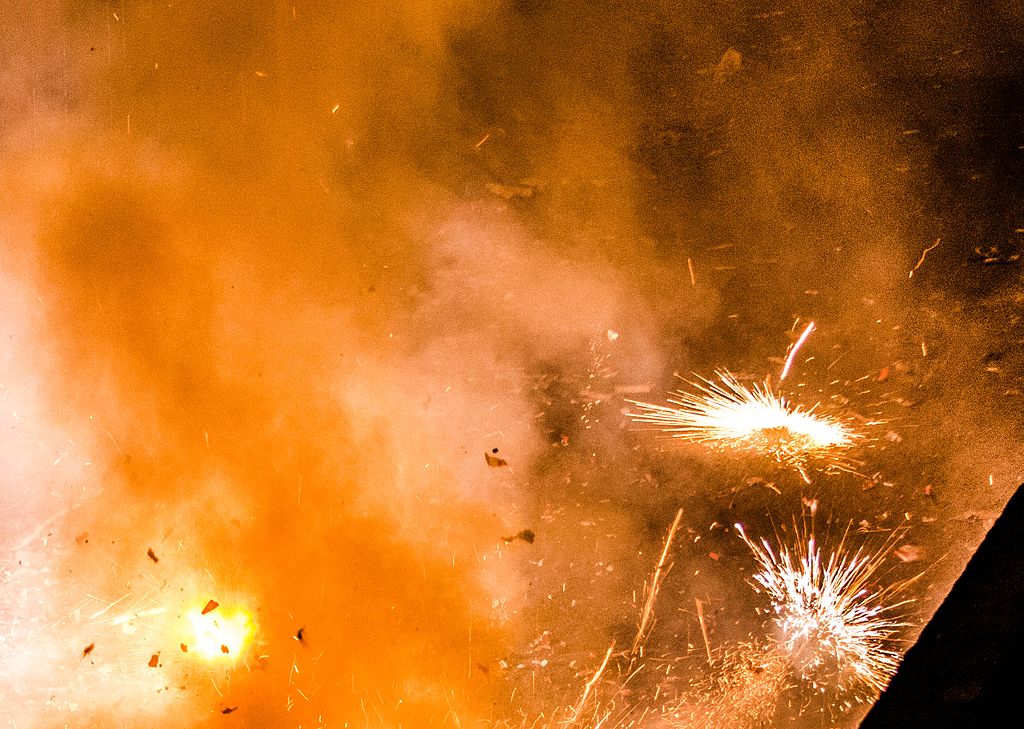
(Source: Ashwin Kumar, [CC BY-SA 2.0], via Wikimedia Commons.)
Last Friday, the government declared an emergency. Schools were closed until Wednesday. The government began handing out 5 million face masks to students and their families. People were warned to stay inside and not to exercise outdoors.
The pollution was so bad on Sunday that over 30 flights were directed away from New Delhi.
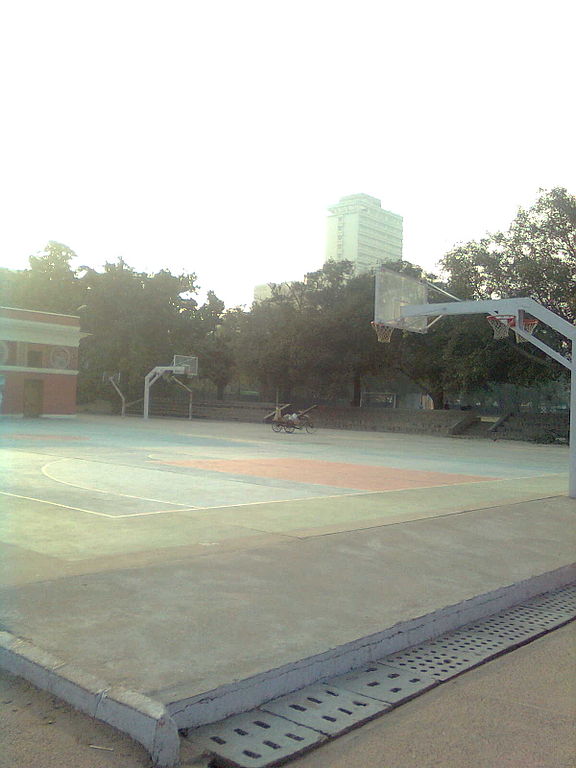
(Source: Anmolp2010 [Public domain], via Wikimedia Commons.)
The government has taken several steps to try to bring the level of air pollution down. All construction (building) in the capital was stopped for a week.
Starting Monday, the city began limiting cars by their license plate numbers. Only cars with even numbered plates can drive on even dates, and odd numbered plates can only drive on odd dates. The rule doesn’t affect scooters, motorcycles, or women driving alone.
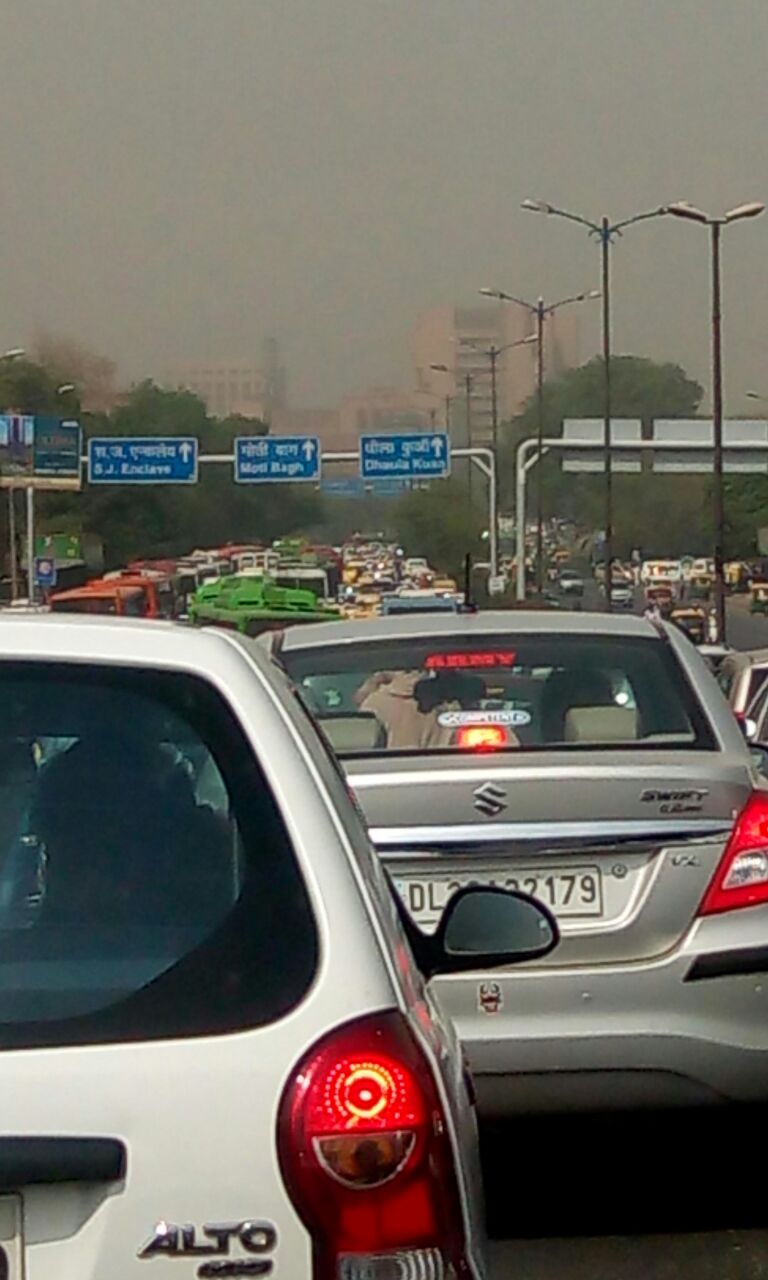
(Source: Srvkumar09 [CC BY-SA 4.0], via Wikimedia Commons.)
Though the city said the plan is a success and will keep 1.2 million cars off the roads each day, it’s not clear that the rule makes a big difference in the amount of pollution in the air.
Studies show that about 44% of the pollution comes from farmers in the countryside around Delhi. At the end of the rice-growing season, most farmers clear the “stubble” (the remaining plant stems) from their land by burning the straw covering their fields.
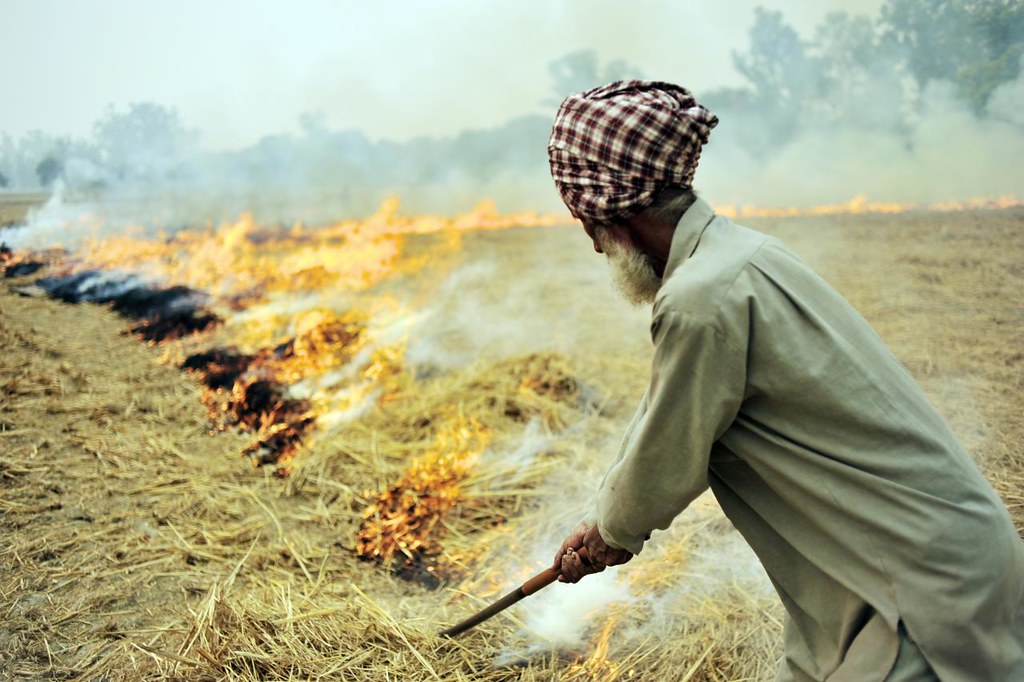
(Source: Neil Palmer, CIAT, via Flickr.com.)
For farmers, this is much easier than other ways of clearing the land. But these stubble fires create huge amounts of smoke, which wind up collecting in cities like New Delhi.
On Monday, India’s highest court ruled that all stubble fires near New Delhi must be stopped right away.
😕
This map has not been loaded because of your cookie choices. To view the content, you can accept 'Non-necessary' cookies.
